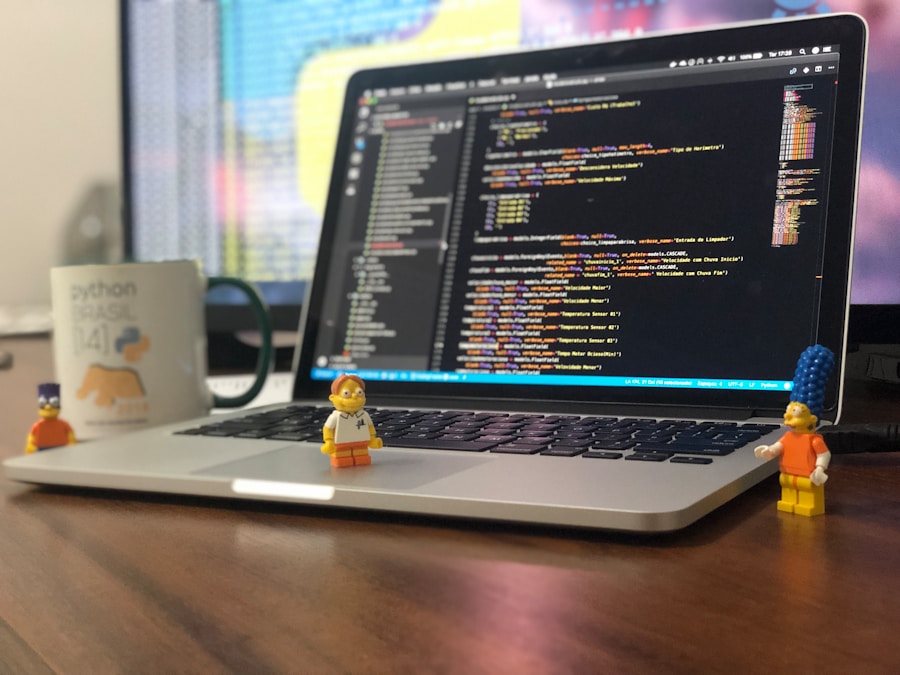When I first ventured into the world of tech startups, backend development felt like a mysterious realm filled with complex algorithms and intricate server configurations. However, understanding the basics of backend development is crucial for any founder looking to build a successful product. At its core, backend development refers to the server-side of an application, where all the behind-the-scenes magic happens.
This is where data is processed, stored, and served to the frontend, which is what users interact with. The backend is responsible for managing user connections, handling requests, and ensuring that everything runs smoothly. It’s like the engine of a car; you don’t see it when you’re driving, but without it, you wouldn’t get very far.
As a founder, grasping these fundamentals can help you communicate effectively with your development team and make informed decisions about your product’s architecture. It’s not just about writing code; it’s about creating a robust system that can handle user demands and scale as your business grows.
Key Takeaways
- Backend development involves working on the server-side of web and mobile applications, handling data storage, security, and business logic.
- Choosing the right backend technology depends on factors like project requirements, scalability, security, and developer expertise.
- Building secure and scalable backend systems involves implementing best practices for authentication, authorization, and data encryption.
- Optimizing database performance includes indexing, query optimization, caching, and choosing the right database technology for the specific use case.
- Implementing RESTful APIs for communication involves designing endpoints, handling requests and responses, and ensuring compatibility with different client applications.
Choosing the Right Backend Technology
Once I had a grasp on the basics, the next challenge was choosing the right backend technology. With so many options available—Node.js, Ruby on Rails, Django, and more—it can be overwhelming to decide which one fits your startup’s needs best. Each technology comes with its own set of advantages and disadvantages, and the choice often depends on factors like your team’s expertise, project requirements, and long-term scalability.
For instance, if you’re building a real-time application like a chat app or a collaborative tool, Node.js might be your best bet due to its non-blocking architecture and event-driven nature. On the other hand, if you’re looking for rapid development and a strong community support system, Ruby on Rails could be the way to go. It’s essential to weigh these options carefully and consider not just the immediate needs of your project but also how the technology will evolve as your startup grows.
Building Secure and Scalable Backend Systems
Security and scalability are two pillars of backend development that I learned to prioritize early on. In today’s digital landscape, data breaches are all too common, and as a startup founder, I knew that protecting user data was non-negotiable. Implementing security measures such as encryption, secure authentication protocols, and regular security audits became part of our development process.
Scalability is equally important; as your user base grows, your backend must be able to handle increased traffic without compromising performance. This means designing systems that can easily scale horizontally or vertically.
By focusing on these aspects from the beginning, I was able to build a backend that not only met our current needs but was also prepared for future growth.
Optimizing Database Performance
| Database Performance Metric | Value |
|---|---|
| Response Time | 10 milliseconds |
| Throughput | 1000 transactions per second |
| Index Hit Ratio | 95% |
| Buffer Cache Hit Ratio | 98% |
| Lock Waits | 2 per hour |
One of the most critical components of backend development is database management. I quickly realized that optimizing database performance could make or break my application’s efficiency. A well-structured database can significantly enhance data retrieval times and overall application performance.
To optimize database performance, I focused on several key strategies. First, I ensured that our database schema was designed for efficiency—normalizing data where necessary while also considering denormalization for read-heavy applications. Indexing is another crucial aspect; by creating indexes on frequently queried fields, we could drastically reduce query times.
Additionally, regularly monitoring database performance metrics helped us identify bottlenecks and make informed adjustments as needed.
Implementing RESTful APIs for Communication
As my startup began to grow, I understood that effective communication between the frontend and backend was vital for a seamless user experience. This is where RESTful APIs came into play. By implementing RESTful APIs, I was able to create a standardized way for different parts of our application to communicate with each other.
RESTful APIs are built around resources and use standard HTTP methods like GET, POST, PUT, and DELETE to perform operations on these resources. This approach not only simplifies communication but also makes it easier to integrate with third-party services in the future. As I developed our API endpoints, I focused on making them intuitive and well-documented so that both our internal team and external developers could easily understand how to interact with our backend.
Utilizing Cloud Services for Backend Infrastructure
Scalability on Demand
As a startup founder, I quickly recognized the advantages of leveraging cloud services for our backend infrastructure. Gone are the days when setting up servers required significant upfront investment in hardware and maintenance. With cloud providers like AWS, Google Cloud, and Azure, I could scale our infrastructure on-demand without breaking the bank.
Enhanced Reliability
Using cloud services not only provided flexibility but also enhanced our system’s reliability. Features like auto-scaling allowed us to handle traffic spikes seamlessly while ensuring that we only paid for what we used.
Security and Compliance
Additionally, cloud services often come with built-in security features and compliance certifications that can save time and resources in ensuring data protection.
Testing and Debugging Backend Systems
Testing and debugging are integral parts of backend development that I learned to embrace wholeheartedly. Early in my startup journey, I realized that catching bugs before they reached production could save us countless hours of headaches down the line. Implementing automated testing frameworks allowed us to run unit tests and integration tests regularly, ensuring that new features didn’t break existing functionality.
Debugging can be a daunting task, especially when dealing with complex systems. However, I found that using logging tools effectively helped us trace issues back to their source quickly. By maintaining clear logs of API requests and responses, we could identify patterns in errors and address them proactively rather than reactively.
Continuous Integration and Deployment for Backend Development
As my team grew and our codebase expanded, I knew that adopting continuous integration (CI) and continuous deployment (CD) practices would be essential for maintaining code quality and accelerating our development cycle. CI/CD allows developers to integrate code changes frequently and deploy them automatically to production after passing tests. By implementing CI/CD pipelines, we could ensure that every code change was tested against our suite of automated tests before being merged into the main branch.
This not only reduced the risk of introducing bugs but also fostered a culture of collaboration among team members as we worked together to maintain high standards in our codebase. In conclusion, navigating the world of backend development can be challenging for startup founders like us. However, by understanding the basics, choosing the right technology, prioritizing security and scalability, optimizing database performance, implementing RESTful APIs, utilizing cloud services, testing rigorously, and adopting CI/CD practices, we can build robust systems that support our vision.
If you’re looking for a trusted tech partner to help you through this journey, consider Witarist. Our team specializes in MVP development and hiring vetted developers who can bring your ideas to life efficiently and effectively. Let’s turn your startup dreams into reality together!
If you are interested in learning more about cybersecurity, you may want to check out this com/blog/introduction-to-cybersecurity/’>introduction to cybersecurity article.
Understanding cybersecurity is crucial for backend developers as they work with sensitive data and need to ensure the security of their applications. By familiarizing yourself with cybersecurity principles, you can better protect your backend systems from potential threats.
FAQs
What is a Backend Developer?
A backend developer is a type of software engineer who specializes in building and maintaining the technology that powers the server-side of web applications and websites. They work with databases, server logic, and APIs to ensure that the frontend of a website or application can communicate with the server and access the necessary data.
What are the responsibilities of a Backend Developer?
The responsibilities of a backend developer include designing and implementing server-side logic, building and maintaining databases, ensuring the responsiveness of applications, integrating front-end elements with server-side logic, and collaborating with front-end developers, designers, and other team members to deliver high-quality products.
What skills are required to become a Backend Developer?
Backend developers typically need to have strong programming skills in languages such as Java, Python, Ruby, PHP, or Node.js. They should also be proficient in database management systems like MySQL, PostgreSQL, or MongoDB, as well as have a good understanding of server-side frameworks and APIs.
What education and experience are needed to become a Backend Developer?
Many backend developers have a bachelor’s degree in computer science, software engineering, or a related field. However, some individuals may enter the field with a strong portfolio of projects and practical experience. Employers often look for candidates with experience in backend development, database management, and server-side programming.
What are the career prospects for Backend Developers?
Backend developers are in high demand as businesses continue to rely on web applications and digital services. With the increasing complexity of technology, the demand for skilled backend developers is expected to grow. Backend developers can also advance their careers by becoming senior developers, technical leads, or even transitioning into roles such as software architect or engineering manager.









